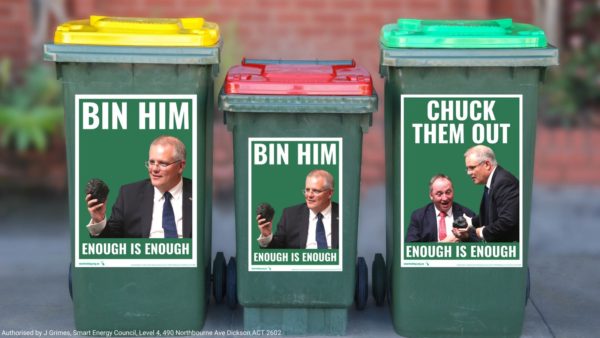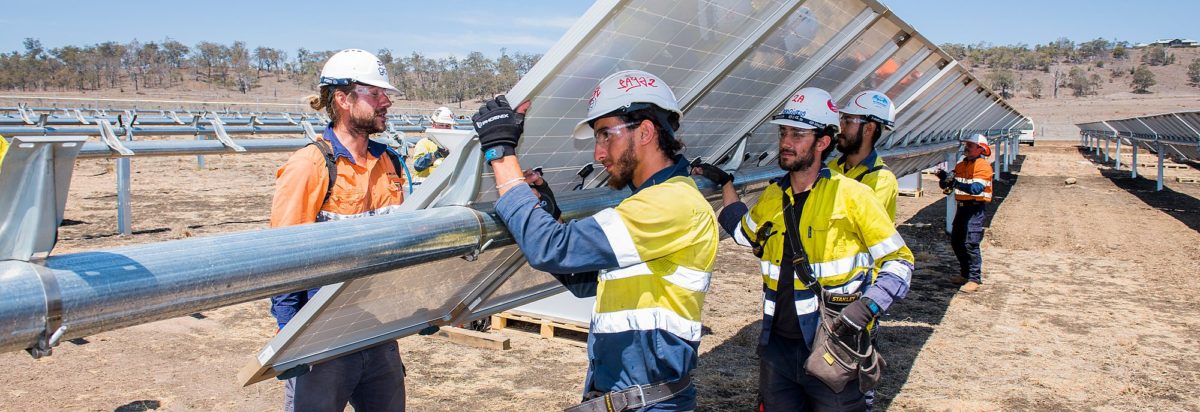Ahead of the federal election, industry peak body the Clean Energy Council has released its Roadmap for a Renewable Energy Future: Federal Election Policy Recommendations which outlines policy paths for the next federal government to deliver on Australia’s emission reduction commitments and realise the advantages of our natural renewable resources.
The Clean Energy Council’s vision was delivered in the form of a nine-point plan. I will go into more detail on the proposed policies, but as a taster each of the nine pathways could be summarised as:
- Electrify Australia
- Incentivise Australians to switch to clean energy
- Upgrade electricity networks
- Organise workforces and supply chains
- Fund coal communities’ transitions
- Accelerate Australia’s energy market reforms
- Fund clean energy innovation
- Decarbonise industry
- Fund hydrogen to achieve maximum export potential
In short, the plan seems to move in chronological priorities, promoting the internal delivery of an 100% renewable electricity grid within the decade, while then setting up the foundations to build hydrogen capacity primarily as an export industry in the longer term future.
The Clean Energy Council (CEC) estimates Australia will need to add at least 30 GW of solar and wind to replace coal generation by 2040. To power an ‘all-electric Australia’ – meaning switching household appliances, cars, industry etc to electric models – would require renewable energy production in Australia to increase 20 fold.

Smart Energy Council/Twitter
On the longer horizon, to turn Australia into a green hydrogen exporting superpower, CEC estimates the country would need another 700 GW of installed wind and solar capacity over the next 30 years.
Policy plans in detail
1. Electrify Australia: power the Australian economy and industry with wind, solar, hydro, bioenergy and battery storage.
This idea has been gaining traction recently, spurred by Australian Saul Griffith’s ‘Electrify Everything’ campaign. Basically, CEC’s main vision here is for the future federal government to set a clear target for Australia to be powered by clean energy by 2030.
It says an electricity grid powered by 100% renewable energy by 2030 will deliver emissions reductions based on 2005 levels of 44.5%. “This is just below the global average of 45% – it’s not an ambitious or difficult target – it’s the low-hanging fruit,” CEC Chief Executive Kane Thornton said.
2. Empower customers and communities to make the switch to clean energy
Here CEC proposes setting a target for all suitable Australian buildings to have rooftop solar and a household battery by 2030. For customers where solar isn’t so appropriate, CEC wants to see the promotion of GreenPower – a government accredited renewable energy product.
CEC also wants to see a federal household battery program introduced. While similar programs have already been, or are in the process of being, rolled out in individual states, the council presumably wants to see a nation-wide approach similar to the Commonwealth solar scheme, the Small-scale Renewable Energy Scheme.
3. Build a strong, smart, 21st-century electricity network
Quite self explanatory, CEC is calling for urgent funding for grid infrastructure upgrades, proposing a $20 billion fund to leverage private sector investment. This would surely be necessary to support all the solar its proposing on Australian rooftops (currently around one third of households have solar and its already causing major issues on low voltage grids).
CEC wants Project EnergyConnect, HumeLink, Marinus Link and the Central-West Orana Renewable Energy Zone Transmission Link all prioritised. It noted that while there has been massive investment in clean energy projects over the past five years in Australia, but this investment has slowed dramatically since 2019 because of the inadequacy of Australia’s transmission network and significant barriers to grid connection.
The council is also wants to see reforms to the planning processes around energy storage as well as extra funding to support innovation in grid-forming inverters.
4. Maximise the creation of quality clean energy jobs and a local supply chain
To ensure Australia has sufficient and well-trained people on the ground, CEC proposes establishing a workforce strategy task force which will include industry, governments, unions, regulators and training and research bodies.
It is also calling for a $200 million clean energy skills package that offers targeted support for training facilities to upskill regional workers in advance of critical transmission and renewable energy infrastructure development
5. Provide greater support and certainty for coal communities and industry
At its heart, this point is about creating a just energy transition. To this end, CEC says a new authority should be established with “at least $1 billion funding to invest in transition initiatives in coal communities across Australia.”
6. Modernise Australia’s energy market and its governance for the clean energy transformation
The main point here is that Australia needs to accelerate its market reforms. The council also wants to see the nation recommit to the Australian Energy Market Agreement, a central agreement between all Australian state and federal governments, and redefine it to specifically include a commitment to transitioning to a decarbonised energy system.
7. Turbo-charge clean energy innovation
Here CEC proposes the federal government double its funding for clean energy research, development and demonstration to $200 million per annum.
8. Decarbonise Australian industries using clean energy
To do this, the council proposes establishing a strategy ‘roadmap’ and fund to solve which industries will be better electrified and which could switch to hydrogen.
It also wants to see Australia set up a green steel flagship project to ensure that countries like Sweden, where green steel is already in production, don’t capture the emerging market.
Finally, the council wants to see a zero emissions target set for all forms of transport by 2050.
9. Australia’s path to become a global clean energy superpower that exports renewable energy
Primarily hydrogen oriented, this proposal appears to have some ideas which conflict with, for instance, the vision of electrifying Australia. For instance, CEC proposes establishing a 10%-15% Gas/Hydrogen Blending Target for gas distribution networks.
This would work similarly to the Renewable Energy Target set by John Howard, which mandated electricity retailers procure an additional 2% of their energy from renewable sources by 2010.
An Gas/Hydrogen Blending Target would place a requirement on gas networks to purchase a small and rising share of renewable gas/hydrogen for blending within their networks.
This topic is fairly contentious in Australia’s clean energy circles, with some staunchly against the idea. If Australia were to electrify, it also may prove fairly redundant.
Aside from this proposal, CEC wants to see the federal government commit $5 billion to a Green Hydrogen Hubs Investment Fund, a massive expansion on the $315 million currently allocated for such projects.
CEC also wants to see a “Hydrogen Co-ordinator General” to oversee delivery of the the National Hydrogen Strategy, as well as the Commonwealth’s guarantee of origin schemes for hydrogen and its derivatives delivered within the year.
This content is protected by copyright and may not be reused. If you want to cooperate with us and would like to reuse some of our content, please contact: editors@pv-magazine.com.









By submitting this form you agree to pv magazine using your data for the purposes of publishing your comment.
Your personal data will only be disclosed or otherwise transmitted to third parties for the purposes of spam filtering or if this is necessary for technical maintenance of the website. Any other transfer to third parties will not take place unless this is justified on the basis of applicable data protection regulations or if pv magazine is legally obliged to do so.
You may revoke this consent at any time with effect for the future, in which case your personal data will be deleted immediately. Otherwise, your data will be deleted if pv magazine has processed your request or the purpose of data storage is fulfilled.
Further information on data privacy can be found in our Data Protection Policy.